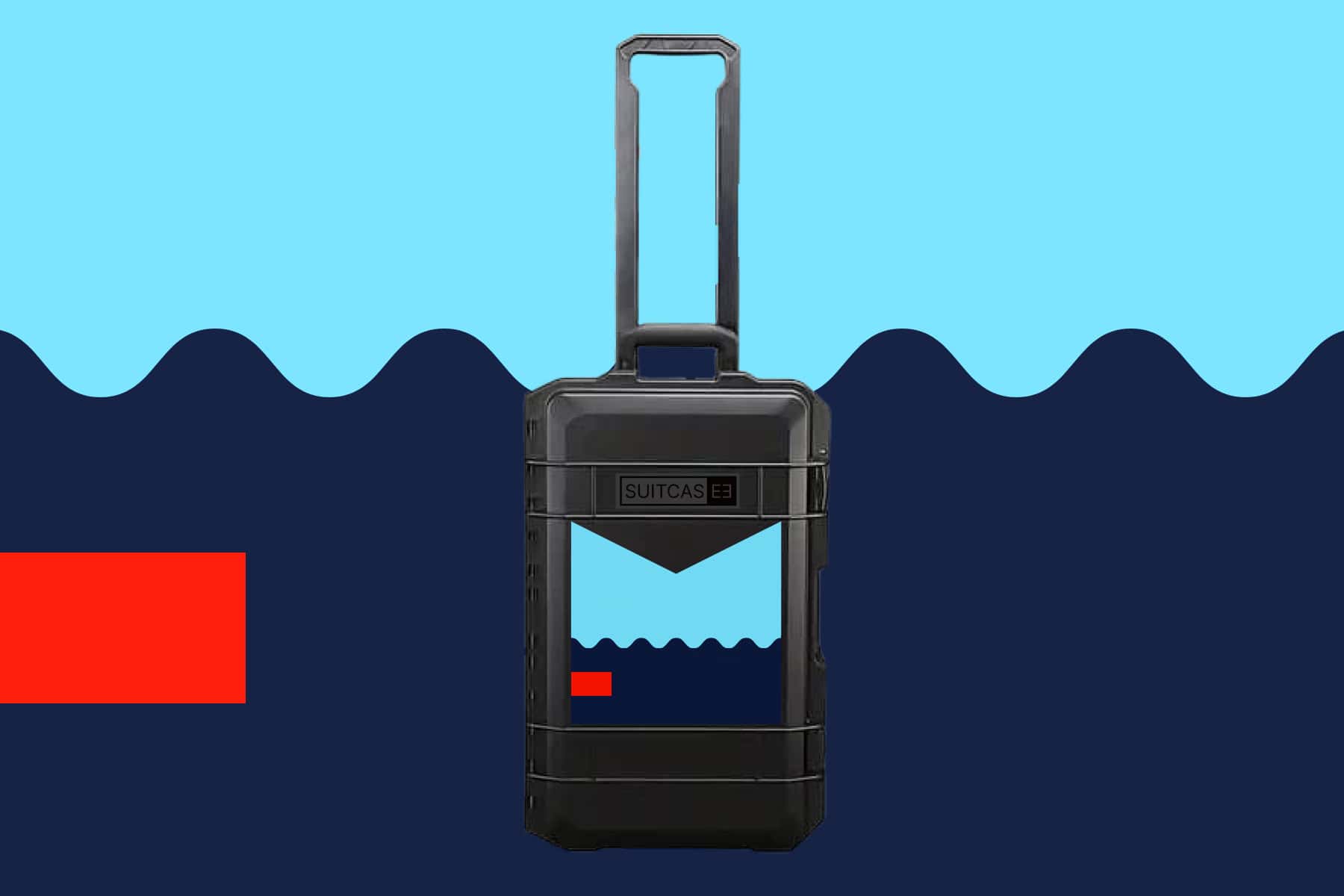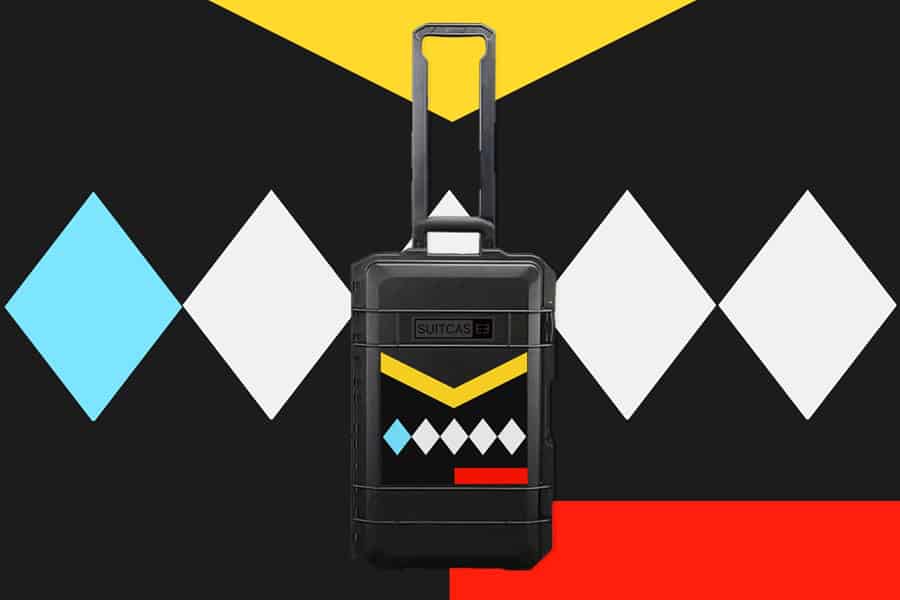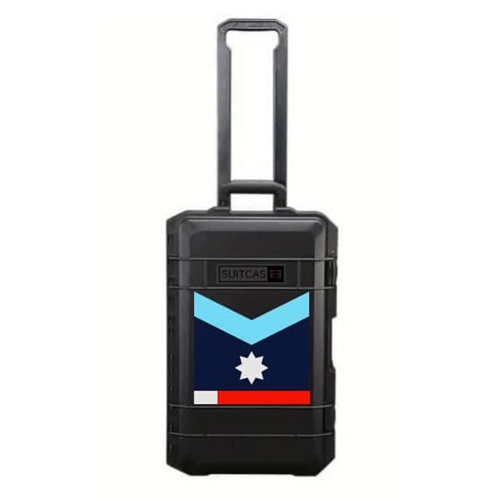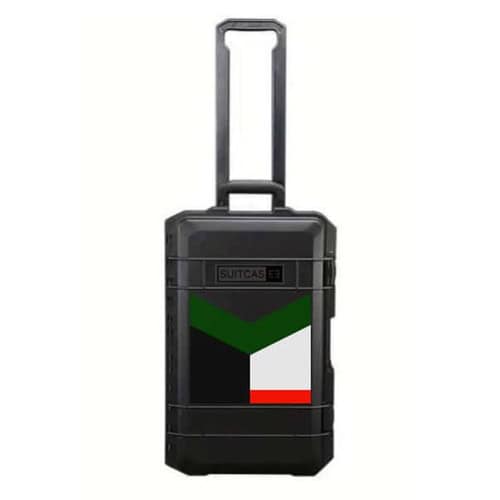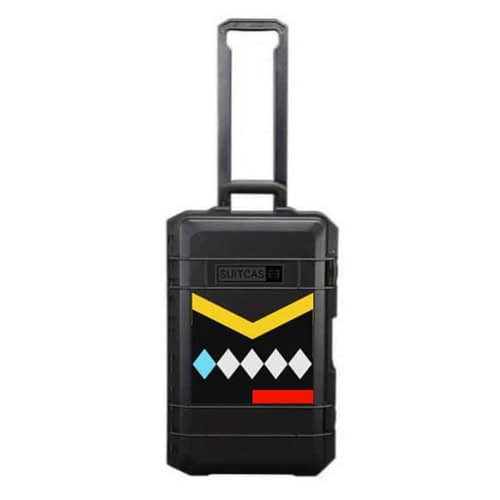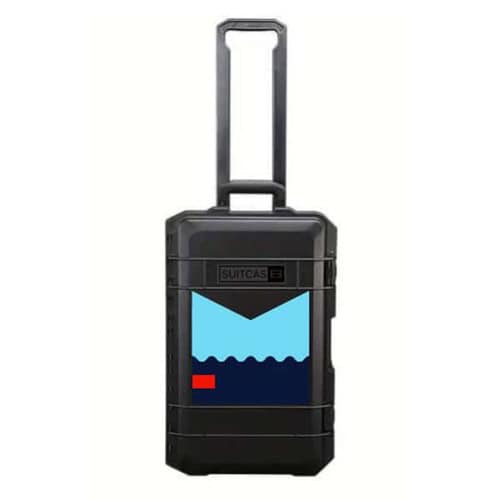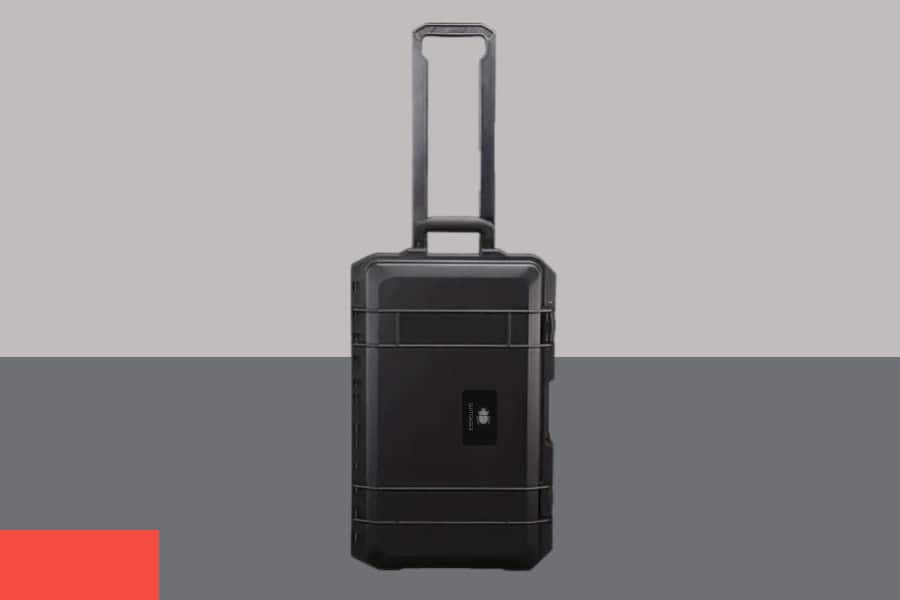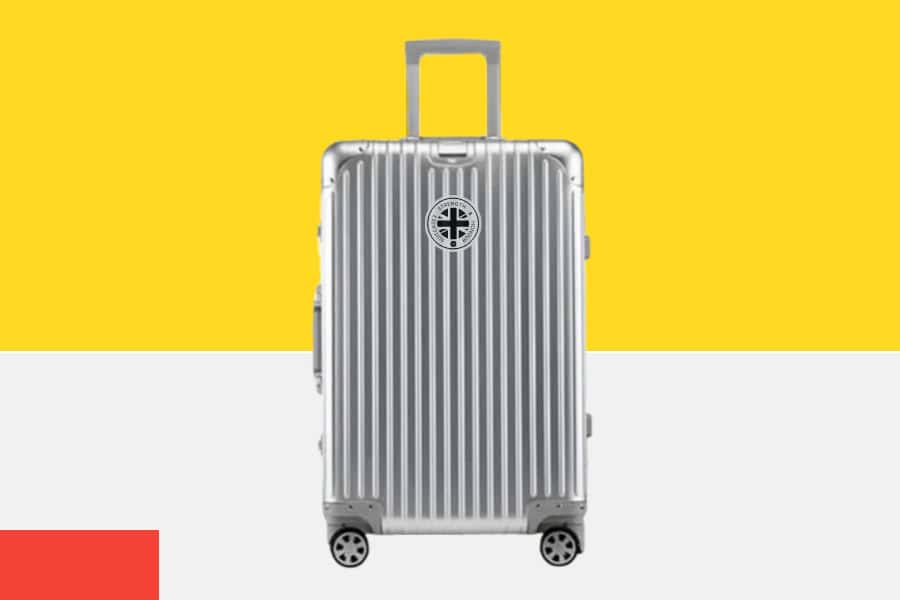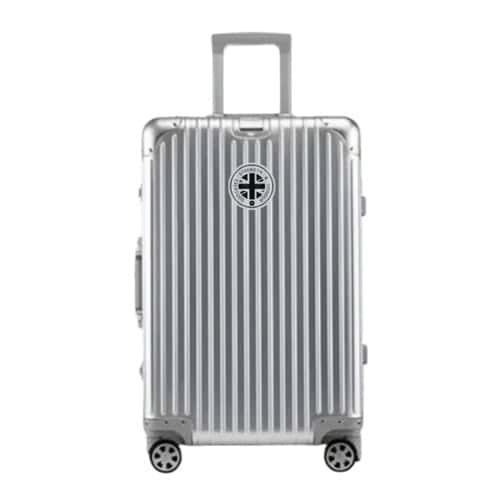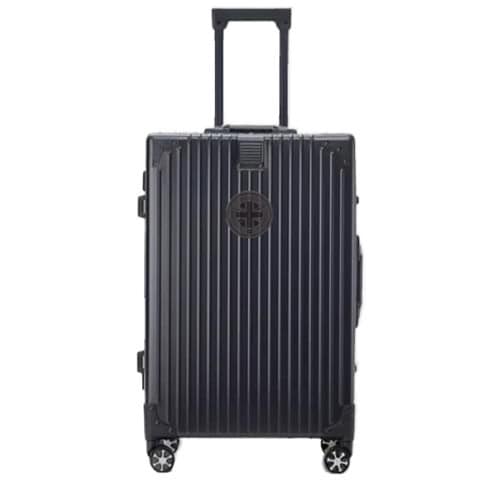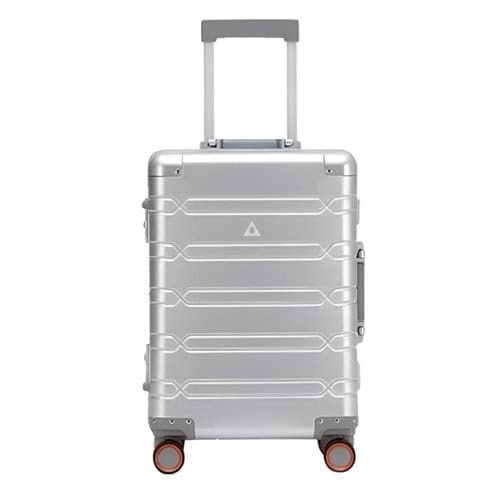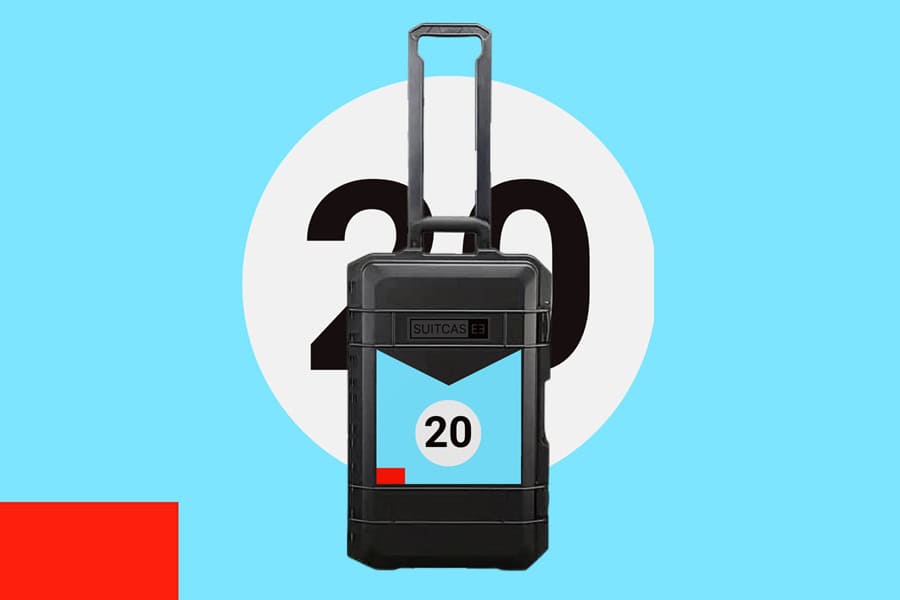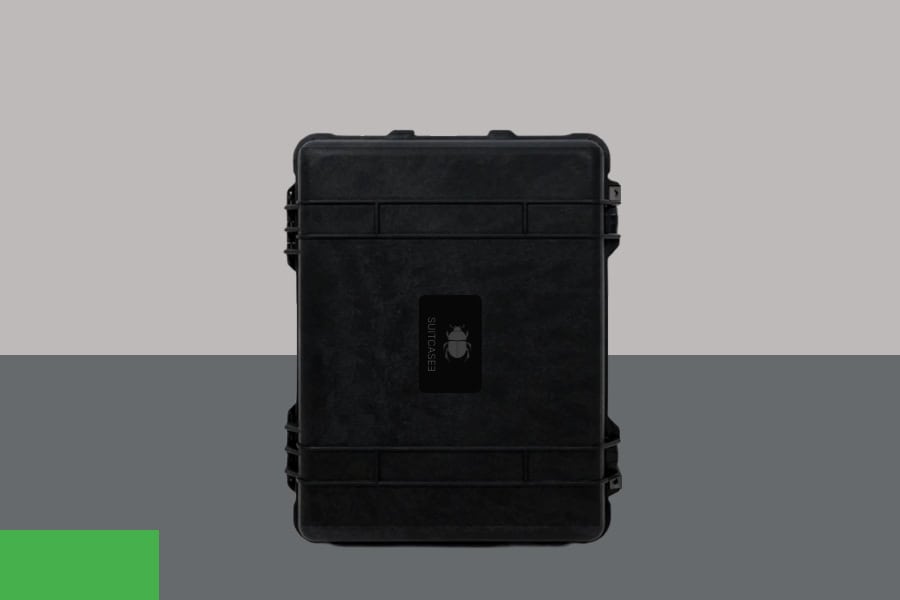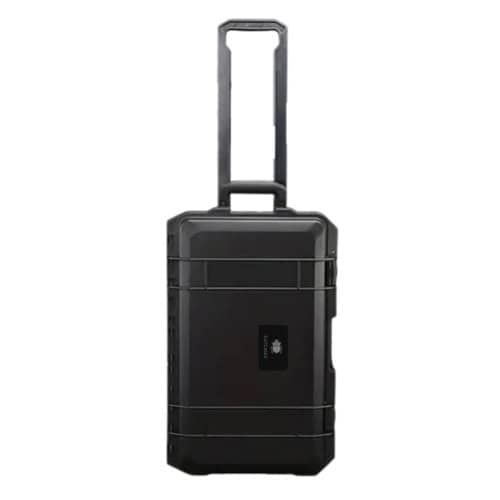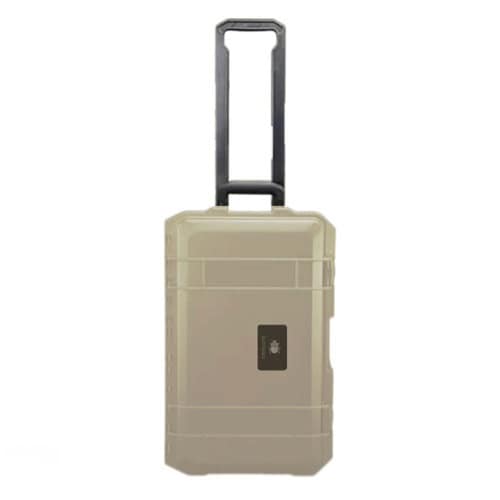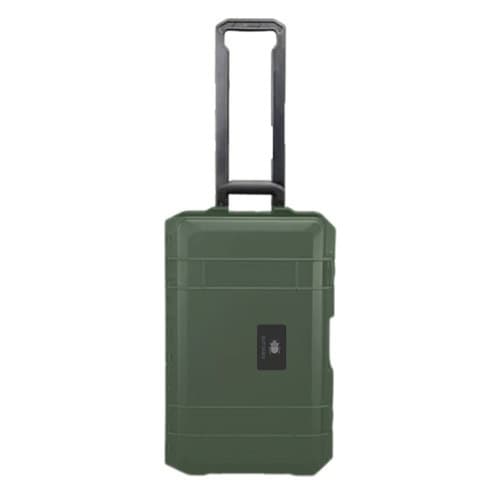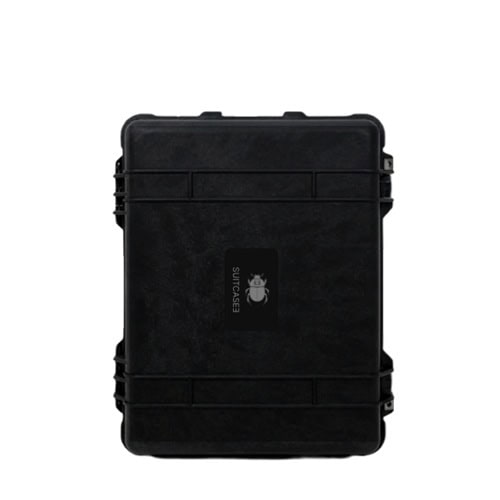Are Suitcases Waterproof?
Strength & Honour
Stay tuned for our eco-friendly luggage rental services
Understanding the Water-Resistance of Your Travel Luggage
SUITCASEƎ
When selecting the ideal suitcase for your travels, one important consideration is its ability to withstand exposure to water. Whether you're caught in a sudden downpour while commuting to the airport or dealing with wet conditions during an adventurous trip, understanding whether your suitcase is waterproof can make a significant difference in protecting your belongings. This guide explores the water-resistance of various types of luggage, helping you make informed decisions to ensure your items remain safe and dry.
Are Suitcases Waterproof at a Glance
Are Suitcases Waterproof?
Waterproof Advantages
Waterproof Drawbacks
Popular Brands
Prevent Water Damage
FAQs
Are Suitcases Truly Waterproof?
The term "waterproof" can be misleading when it comes to suitcases. Most luggage is designed to be water-resistant rather than completely waterproof. Here’s a breakdown of what that means.
Water-Resistant vs. Waterproof
Water-resistant suitcases offer some level of protection against moisture, typically through treated fabrics or sealed seams. However, they may not withstand prolonged exposure to heavy rain or submersion in water. In contrast, waterproof luggage provides complete protection against water ingress, ensuring contents remain dry under all conditions.
Material Matters
The degree of water-resistance or waterproofing largely depends on the materials used in the suitcase's construction. Common materials include:
- Polycarbonate and ABS Plastic: Hard-shell suitcases made from these materials often have water-resistant properties due to their non-porous surfaces, but they may not be entirely waterproof unless specifically designed.
- Aluminium: While aluminium suitcases offer excellent protection against impacts and are naturally resistant to rust and corrosion, they might require additional sealing to be fully waterproof.
- Ballistic Nylon and Polyester: These fabrics are frequently used in soft-shell luggage and can be treated with water-repellent coatings to enhance resistance, but they are not inherently waterproof.
- Polypropylene: A versatile thermoplastic polymer, polypropylene is increasingly used in luggage manufacturing due to its high durability and resistance to water. Polypropylene suitcases are lightweight yet rugged, offering a good balance of protection and practicality, making them suitable for various travel conditions.
Design Features
Suitcases may incorporate specific design features to enhance water-resistance:
- Sealed Zippers: Some models use rubberised or covered zippers to prevent water ingress through zippered areas.
- Welded Seams: Welded seams eliminate needle holes, reducing potential entry points for water.
- Waterproof Liners: Internal liners add an extra layer of protection against moisture.
Products
Expedition Series Bestsellers
Advantages of Waterproof Suitcases
Opting for a suitcase with waterproof capabilities offers a multitude of benefits that cater to various travel needs and scenarios. Here’s a deeper dive into why investing in waterproof luggage can be a smart choice for many travellers.
Protection Against the Elements
Waterproof suitcases are designed to shield your belongings from adverse weather conditions, providing unmatched peace of mind:
- Weather Resilience: Whether you're caught in a torrential downpour or navigating through snow, waterproof suitcases ensure that your clothes, electronics, and personal items remain dry. This protection is crucial when travelling to regions known for unpredictable weather patterns or during seasons prone to heavy rainfall.
- Unforeseen Circumstances: Even in urban settings, unexpected spills or high humidity can pose risks to your luggage contents. Waterproof suitcases act as a barrier against moisture, safeguarding your items from accidental exposure to water.
- Maintaining Freshness: By preventing water ingress, waterproof suitcases help maintain the freshness of your clothing and other perishable items, reducing the risk of musty odours or mildew growth.
Ideal for Adventurous Travels
For those who seek adventure in diverse environments, waterproof luggage is an indispensable companion:
- Outdoor Excursions: Travellers engaging in activities such as hiking, camping, or water sports will benefit from the robust protection offered by waterproof suitcases. These bags can withstand splashes from streams, unexpected rain showers, or damp conditions encountered in forests and mountains.
- High Humidity Destinations: In tropical climates or areas with high humidity levels, waterproof luggage prevents moisture from seeping into your belongings, which is especially important for preserving delicate fabrics and sensitive equipment.
- Travel Versatility: The versatility of waterproof suitcases makes them suitable for a wide range of travel experiences—from rugged wilderness explorations to luxury beach vacations—proving their worth regardless of the destination.
Travel Smart, Travel Stylish
Enhanced Durability
The construction of waterproof suitcases often incorporates materials and techniques that contribute to their overall durability:
- Robust Materials: Waterproof luggage is typically made from high-quality materials such as polycarbonate, polypropylene, or treated ballistic nylon. These materials not only repel water but also offer resistance to scratches, impacts, and abrasions.
- Reinforced Structures: Many waterproof suitcases feature reinforced corners and seams that enhance their structural integrity, allowing them to withstand the rigours of travel and rough handling by baggage handlers.
- Longevity: The combination of resilient materials and solid construction ensures that waterproof suitcases have a longer lifespan compared to standard luggage. This durability translates into long-term value, reducing the need for frequent replacements.
Secure Storage for Valuables
Waterproof suitcases offer superior protection for items that require extra care:
- Electronics Safety: Devices like laptops, tablets, and cameras are vulnerable to water damage. Waterproof suitcases provide an added layer of security, ensuring that these valuable electronics are safe from moisture-related risks.
- Document Protection: Important documents such as passports, travel itineraries, and business papers are kept safe from potential water exposure. This protection is vital for maintaining the integrity and readability of crucial information.
- Peace of Mind: Knowing that your valuables are protected allows you to focus on enjoying your trip rather than worrying about potential damage. Waterproof suitcases provide the assurance that your belongings are secure, no matter the conditions.
Potential Drawbacks of Waterproof Suitcases
While waterproof suitcases offer a range of benefits that enhance travel experiences, they also present certain challenges and considerations that prospective buyers should be aware of. Here’s a detailed exploration of the potential drawbacks associated with waterproof luggage.
Higher Cost
One of the most prominent challenges associated with waterproof suitcases is their cost:
- Premium Pricing: Waterproof suitcases are often constructed using specialised materials and advanced manufacturing techniques to ensure maximum water resistance. This level of craftsmanship and innovation typically results in a higher price point compared to conventional luggage.
- Investment Decision: For budget-conscious travellers, the upfront cost may be a significant barrier. It's essential to evaluate whether the enhanced protection and durability justify the expense, especially if you travel infrequently or primarily to dry destinations.
- Long-Term Value: While the initial cost is higher, waterproof suitcases often provide long-term value through their durability and longevity. This can offset the initial investment over time, particularly for frequent travellers who face varied weather conditions.
Limited Styles and Options
The focus on functionality in waterproof suitcases can sometimes limit aesthetic choices:
- Design Constraints: Prioritising water resistance often means that the design and style elements take a backseat. This can result in a more utilitarian appearance, which might not appeal to travellers seeking fashionable or stylish luggage.
- Customisation Limitations: Due to the technical requirements for creating waterproof features, customisation options such as colours, patterns, or personalisation may be more limited compared to standard luggage offerings.
- Market Availability: The niche nature of waterproof luggage can also lead to fewer brands offering a wide variety of models, restricting consumer choice in terms of design diversity and brand selection.
Travel Smart, Travel Stylish
Weight Considerations
The construction of waterproof suitcases can impact their weight, influencing travel logistics:
- Additional Layers: To achieve waterproof status, suitcases often incorporate extra layers or reinforcements, which can add to their overall weight. This additional heft may be noticeable when carrying or lifting your luggage.
- Airline Restrictions: Heavier luggage can pose challenges when adhering to airline baggage weight limits. Exceeding these limits can result in additional fees, making it crucial for travellers to consider the weight implications of their luggage choice.
- Handling Effort: The increased weight may also affect ease of manoeuvrability, particularly during long transfers or when navigating crowded airports. Travellers should assess whether the added protection justifies potential handling difficulties.
Maintenance Requirements
Ensuring the continued effectiveness of waterproof features requires attention and care:
- Seal Integrity: Maintaining the integrity of seals and coatings is essential for preserving water resistance. Over time, these components may degrade or become less effective, necessitating periodic inspections and maintenance.
- Reapplication Needs: Some waterproof treatments or coatings may require reapplication to sustain their protective qualities. This ongoing maintenance can add to the overall upkeep and cost associated with owning waterproof luggage.
- Awareness and Care: Travellers must remain vigilant about the condition of their waterproof suitcase, addressing any damage or wear promptly to prevent water ingress. This level of care may not be suitable for those who prefer low-maintenance travel gear.
Products
Origin Series Bestsellers
Popular Brands Offering Waterproof Suitcases
Several reputable brands specialise in crafting high-quality waterproof luggage:
Pelican
Pelican is known for its durable protective cases designed for extreme conditions. Their waterproof suitcases are ideal for adventurous travellers who require top-tier protection.
Key Features:
- Watertight closures and pressure equalisation valves.
- Heavy-duty construction with reinforced corners.
- Impact-resistant exterior ensures maximum durability.
Samsonite
Samsonite combines innovation with practicality, offering a range of water-resistant suitcases designed for everyday travel needs.
Key Features:
- Treated fabrics with water-repellent coatings.
- Durable zippers with rain flaps.
- Lightweight designs suitable for versatile travel scenarios.
RIMOWA
RIMOWA integrates luxury with functionality, offering aluminium suitcases that provide excellent protection against external elements.
Key Features:
- Naturally rust-resistant aluminium exteriors.
- Advanced sealing systems for enhanced water resistance.
- Iconic grooved design with timeless appeal.
SUITCASEƎ
Introducing SUITCASEƎ's Icon and Expedition Series for travellers who value durability and style. Waterproof construction protects belongings, while unique artist edition decals add a touch of exploration spirit.
Key Features:
- Waterproof materials for moisture protection.
- Heavy-duty latches and durable wheels.
- Unique artist edition decals for aesthetic appeal.
Tips for Protecting Your Belongings from Water Damage
While selecting a waterproof suitcase is an essential step in safeguarding your items, there are additional strategies you can implement to ensure comprehensive protection against water damage during travel. Here’s an in-depth look at practical tips to keep your belongings dry and secure.
Use Dry Bags or Pouches
Incorporating dry bags or waterproof pouches into your packing strategy provides an extra layer of security for sensitive items:
- Electronics Protection: Devices such as laptops, tablets, smartphones, and cameras are particularly vulnerable to moisture. Placing them in dedicated dry bags within your suitcase can prevent water ingress, offering peace of mind even in wet conditions.
- Document Safety: Important documents like passports, travel itineraries, and business papers should be stored in waterproof pouches to maintain their integrity and legibility. This precaution is especially crucial when travelling to destinations with high humidity or frequent rain.
- Versatile Usage: Dry bags come in various sizes and are versatile enough to be used for other purposes, such as storing toiletries that might leak or separating wet clothes from dry items during travel.
Pack Strategically
How you pack your suitcase can significantly impact the protection of your belongings:
- Central Placement: Place items most susceptible to water damage, such as electronics and documents, in the centre of the suitcase. This positioning minimizes their exposure to potential entry points like zippers or external seams.
- Layered Packing: Use clothing or towels as an additional barrier by layering them around sensitive items. This method not only cushions these items but also provides extra absorption should any moisture penetrate the suitcase.
- Separation by Type: Group similar items together and use packing cubes to organise your belongings. By compartmentalising, you can easily identify and protect critical items from moisture without disrupting the entire contents of your suitcase.
Products
Icon Series Bestsellers
Check Weather Conditions
Being proactive about the weather forecast can significantly influence your packing decisions:
- Destination Research: Before departure, research the weather conditions at your destination for the duration of your stay. Understanding potential climate variations helps you prepare adequately, whether it involves packing rain gear, sun protection, or thermal layers.
- Adjust Packing Accordingly: If rain is anticipated, consider using protective covers for your suitcase or bringing along rain ponchos and waterproof footwear. These preparations help mitigate the impact of adverse weather conditions on your travel experience.
- Contingency Planning: In addition to checking weather forecasts, have contingency plans in place for unexpected changes in weather. This might include having quick-dry clothing or portable umbrellas readily accessible in your carry-on bag.
Regular Maintenance
Ensuring the continued effectiveness of your suitcase's waterproof features requires regular attention and care:
- Routine Inspections: Periodically inspect the seams, zippers, and seals of your suitcase for signs of wear or damage. Addressing any issues promptly helps maintain their functionality and prevents potential water ingress.
- Seal Reapplication: If your suitcase relies on waterproof coatings or treatments, follow manufacturer guidelines for reapplication intervals. Maintaining these treatments ensures they remain effective throughout the life of the suitcase.
- Cleaning and Care: Regularly clean your suitcase to remove dirt and debris that may compromise its seals. Use a damp cloth and mild soap to gently clean surfaces, avoiding harsh chemicals that could damage protective coatings.
To Sum Up
While not all suitcases are fully waterproof, many offer varying degrees of water resistance to protect your belongings from moisture exposure during travel. By understanding the differences between materials like polypropylene and design features—and considering reputable brands known for their waterproof offerings—you can make an informed choice that aligns with your travel needs and preferences. Investing in a quality waterproof suitcase ensures peace of mind when navigating unpredictable weather conditions while on the go!
Travel Smart, Travel Stylish
REGULARLY ASKED QUESTIONS
Frequently Asked Questions
We have compiled some commonly asked questions
Are hard-shell suitcases more water-resistant?
Generally, hard-shell suitcases made from non-porous materials like polycarbonate offer better natural water resistance than fabric-based soft-shell ones.
Can all suitcases be made waterproof?
Not all suitcases can be made completely waterproof due to material limitations; however, many can be treated to enhance water resistance.
Do waterproof suitcases require special care?
How can I tell if my suitcase is waterproof?
Worth buying a waterproof suitcase for rare travel?
If you often travel to wet climates or carry sensitive equipment, a waterproof suitcase can still be a worthwhile investment despite infrequent use.
What to do if my non-waterproof suitcase gets wet?
Dry it thoroughly as soon as possible to prevent mould or mildew growth; use desiccants like silica gel packets inside the suitcase if needed.
Luggage Rental Wait List
Get Notified
Is there eco-friendly waterproof luggage?
Yes, some brands incorporate sustainable materials into their designs while ensuring effective waterproof capabilities—check individual brand offerings!
Can I make my suitcase more water-resistant?
Applying aftermarket sprays or treatments can improve water resistance; however, effectiveness varies based on material type and condition.
Do airlines treat waterproof suitcases differently?
Is a rain cover enough to protect my suitcase?
Are soft suitcases waterproof?
Soft suitcases are typically water-resistant, not waterproof, and may require additional protection in heavy rain.
